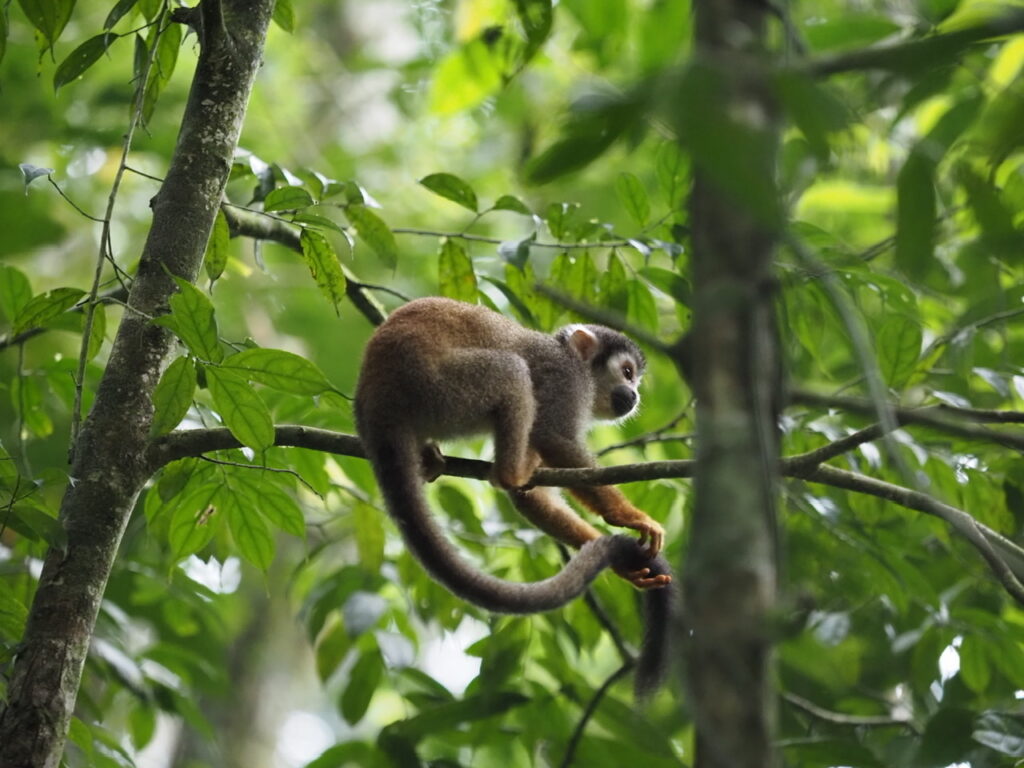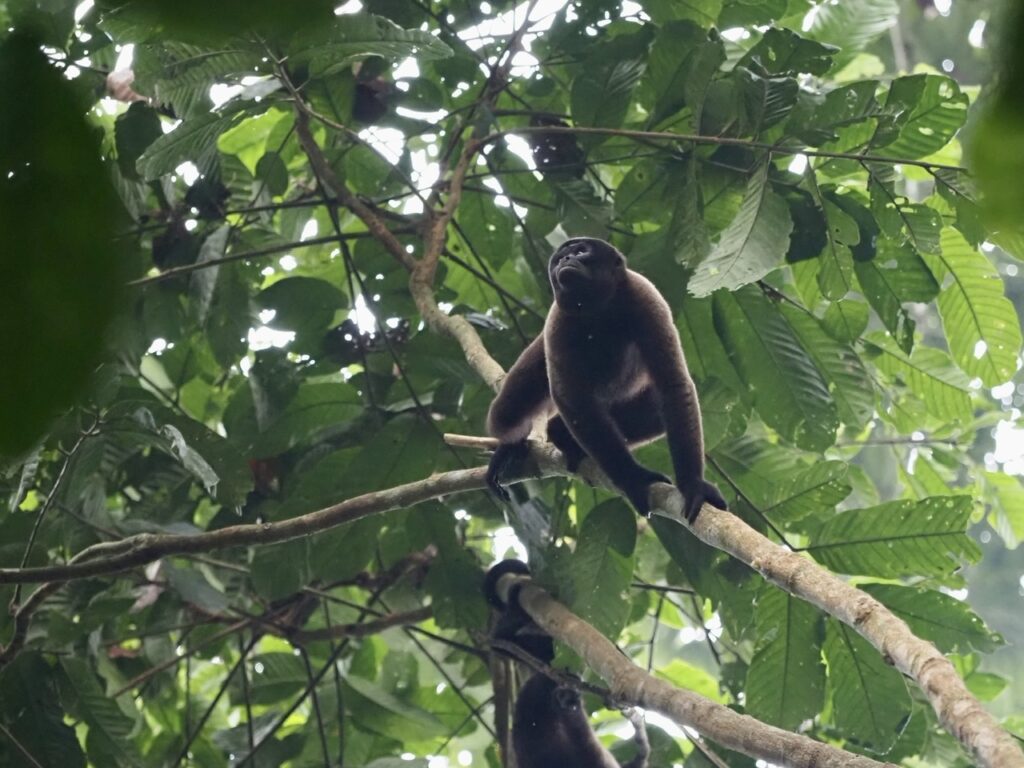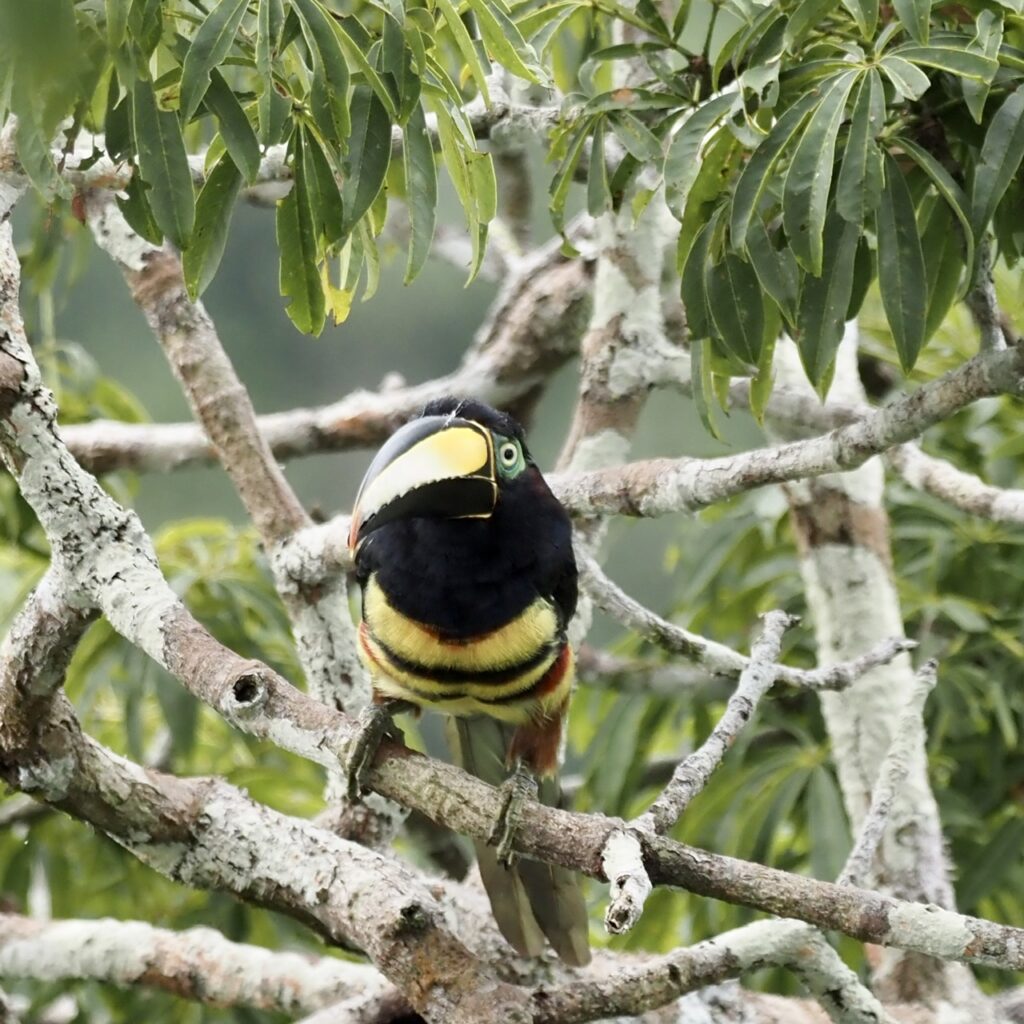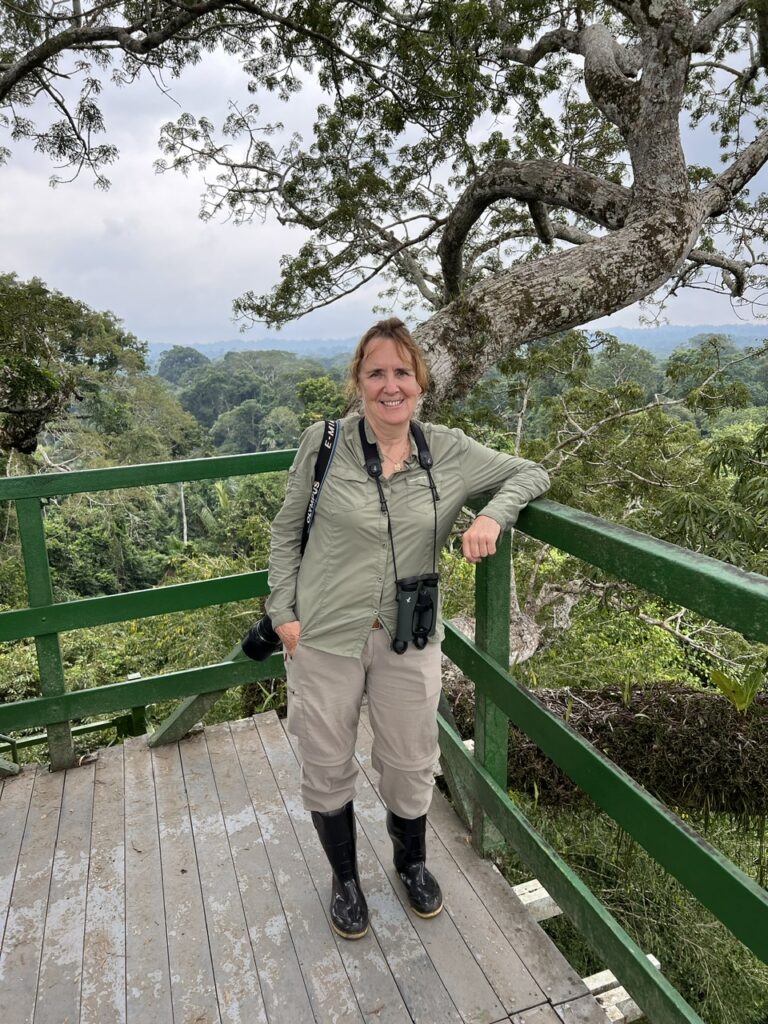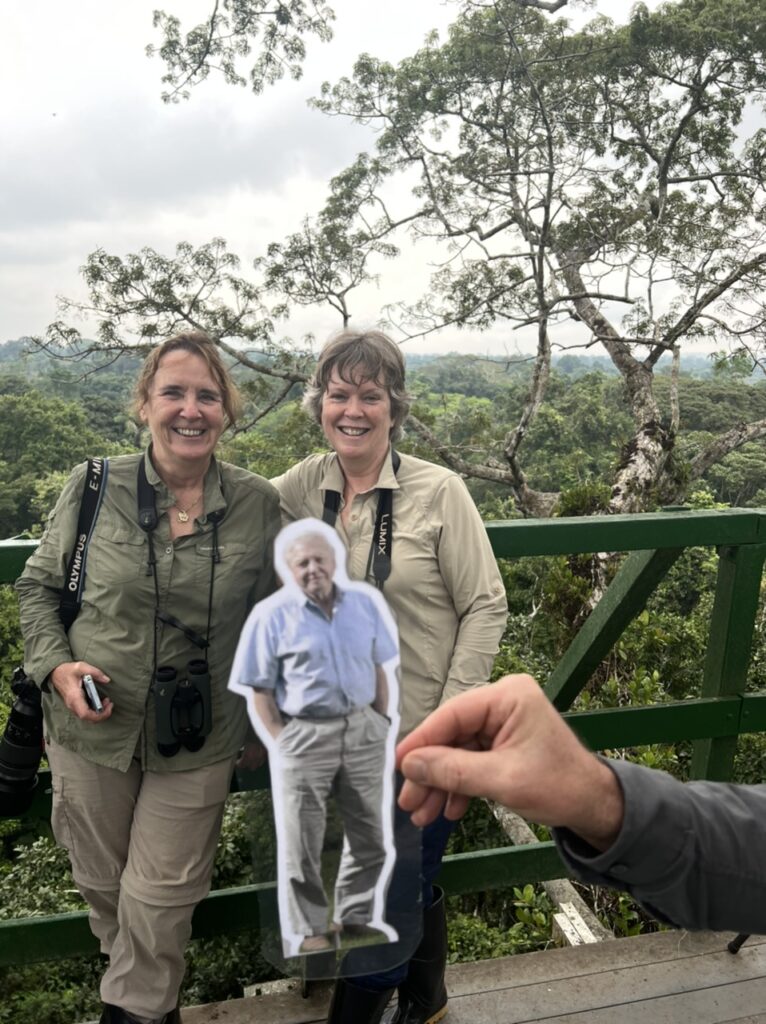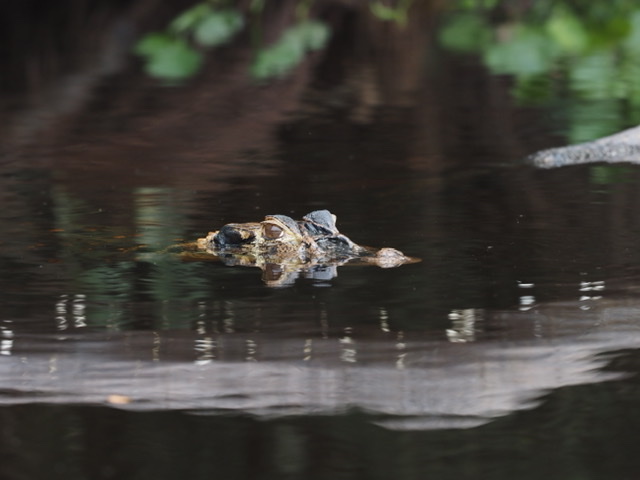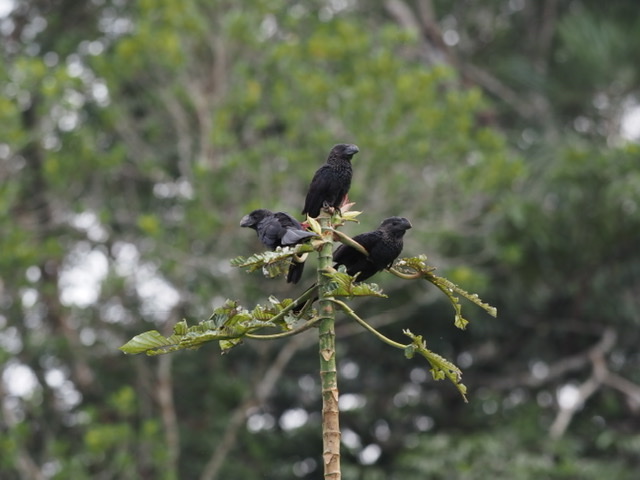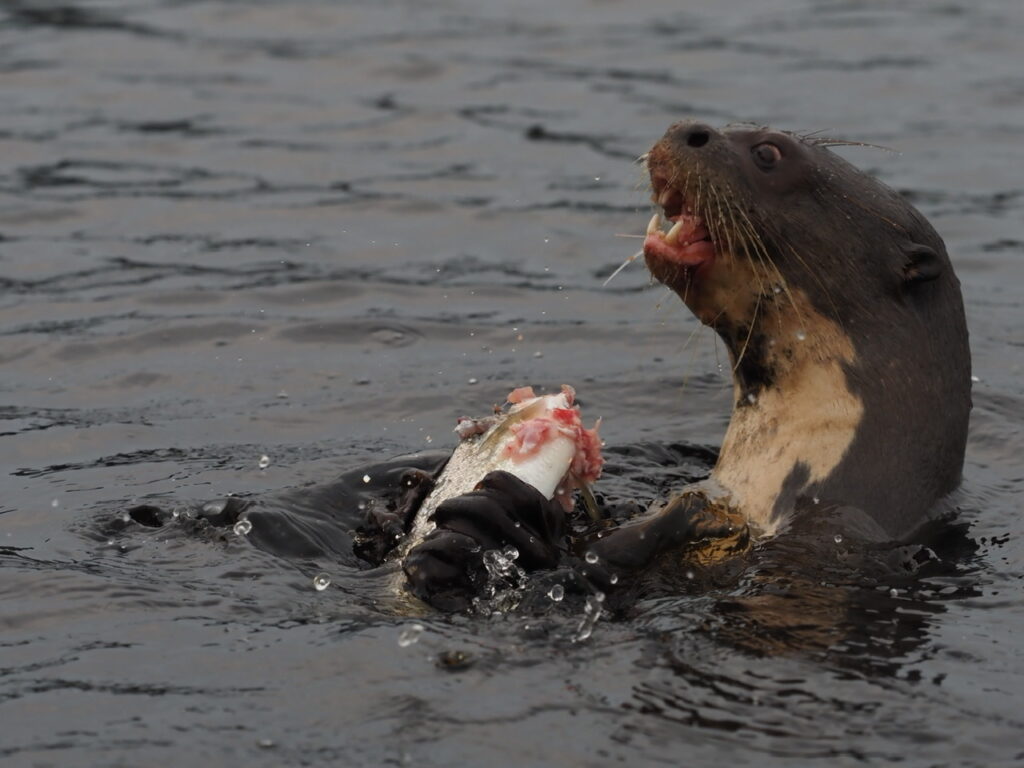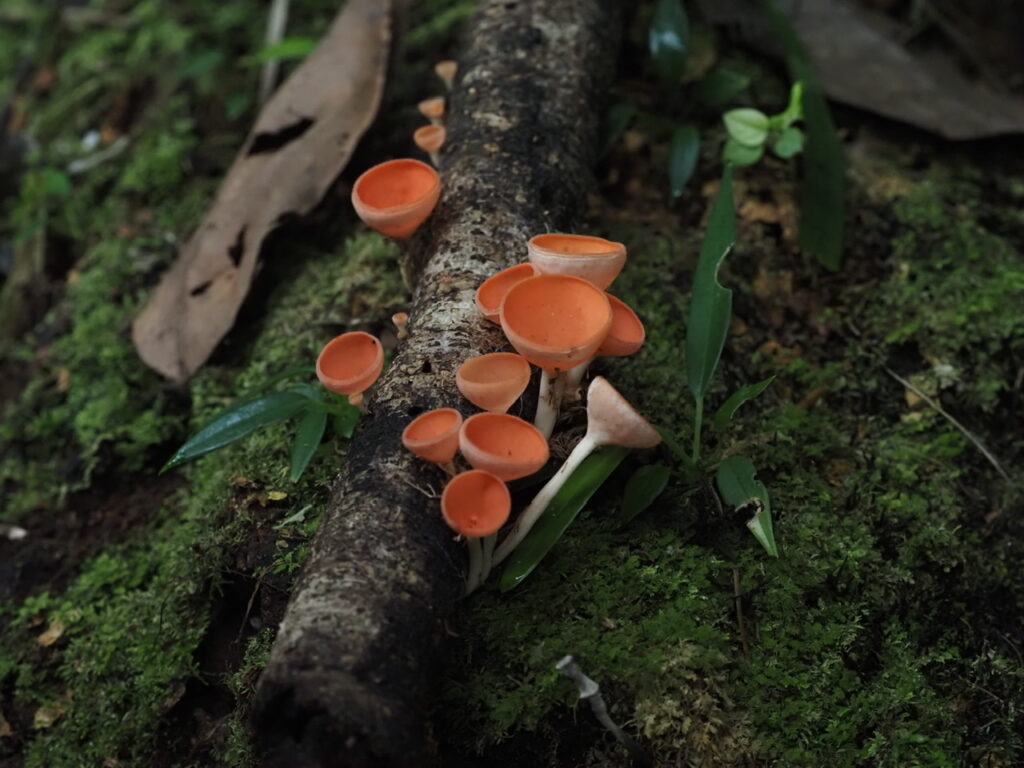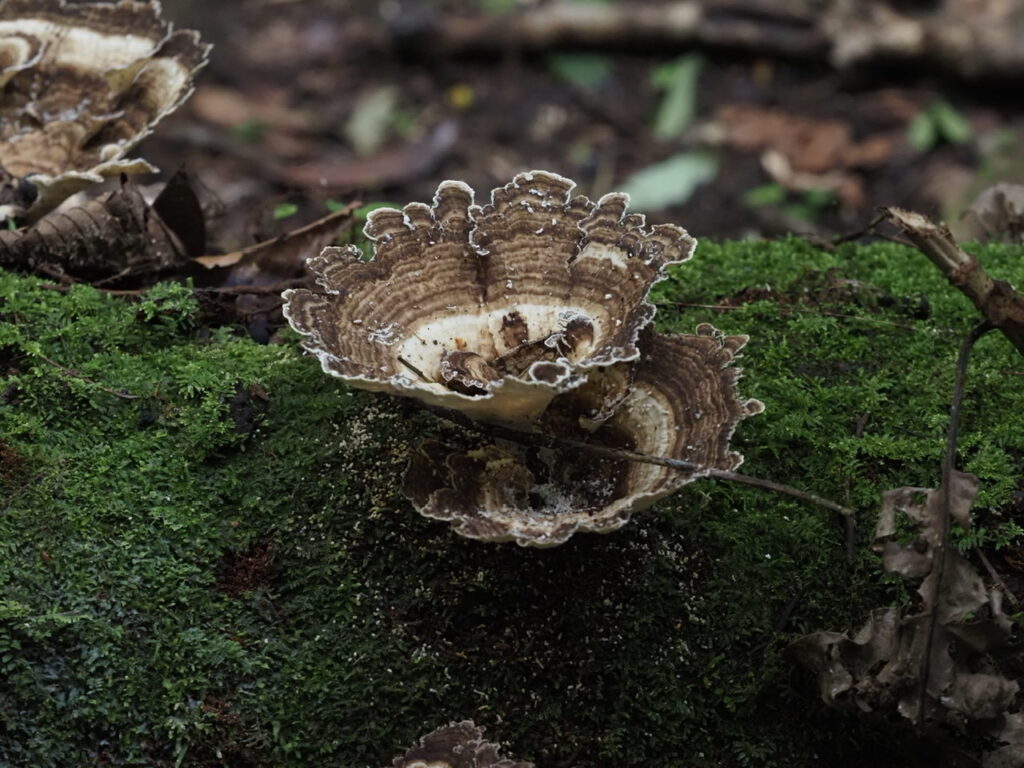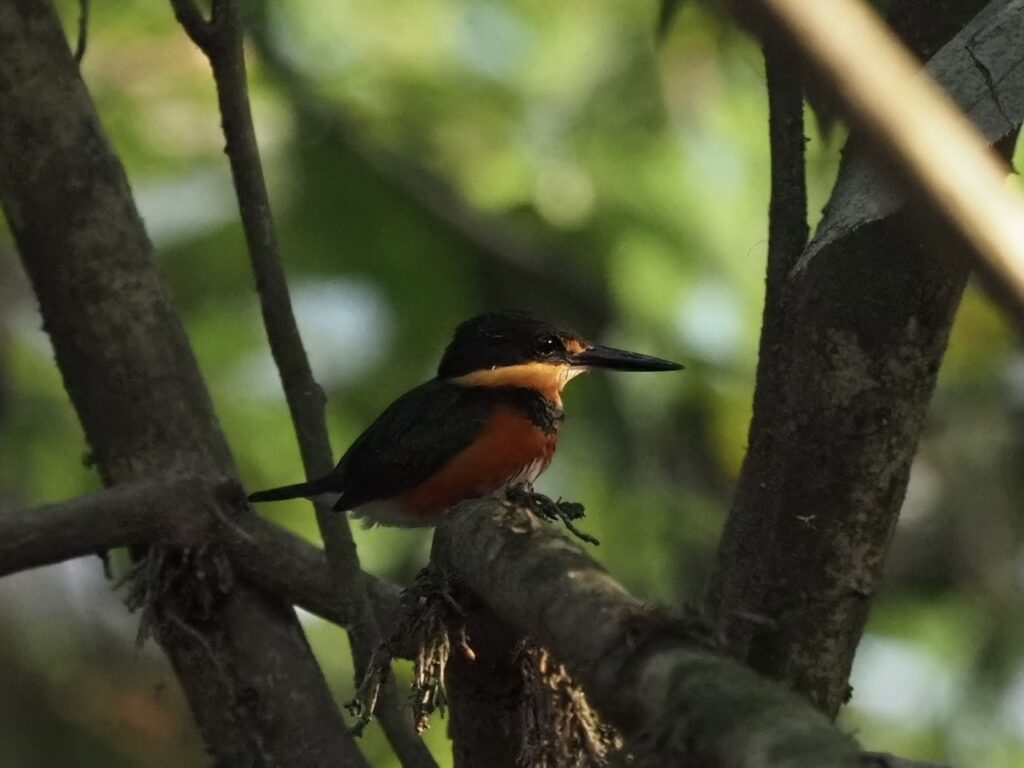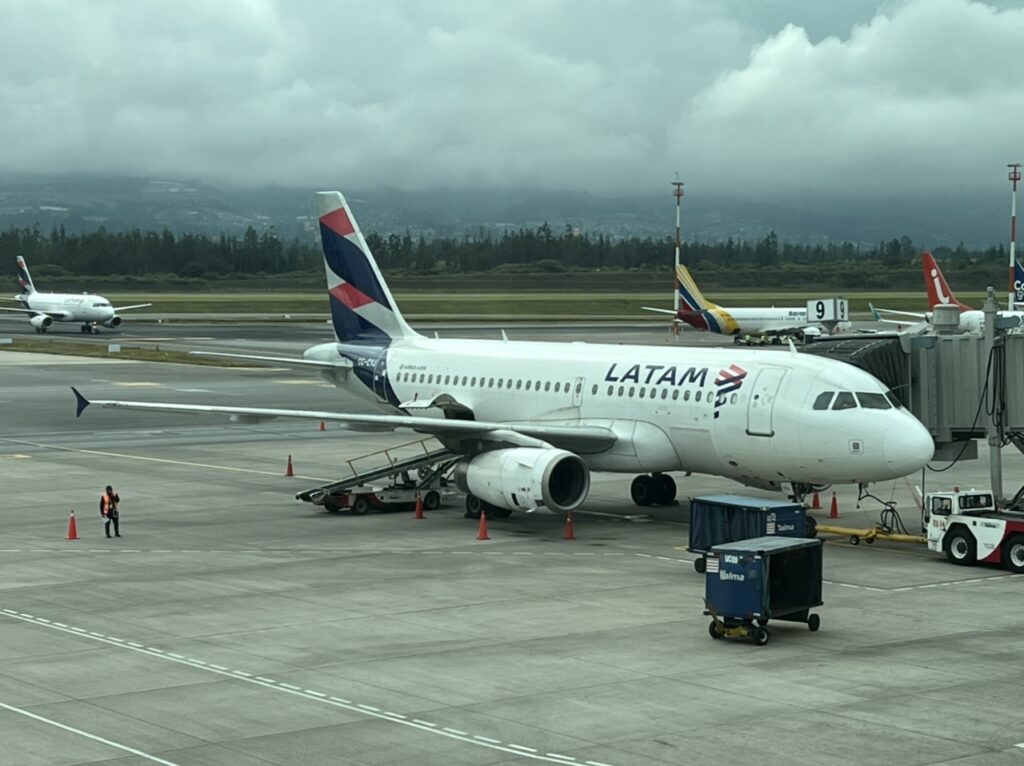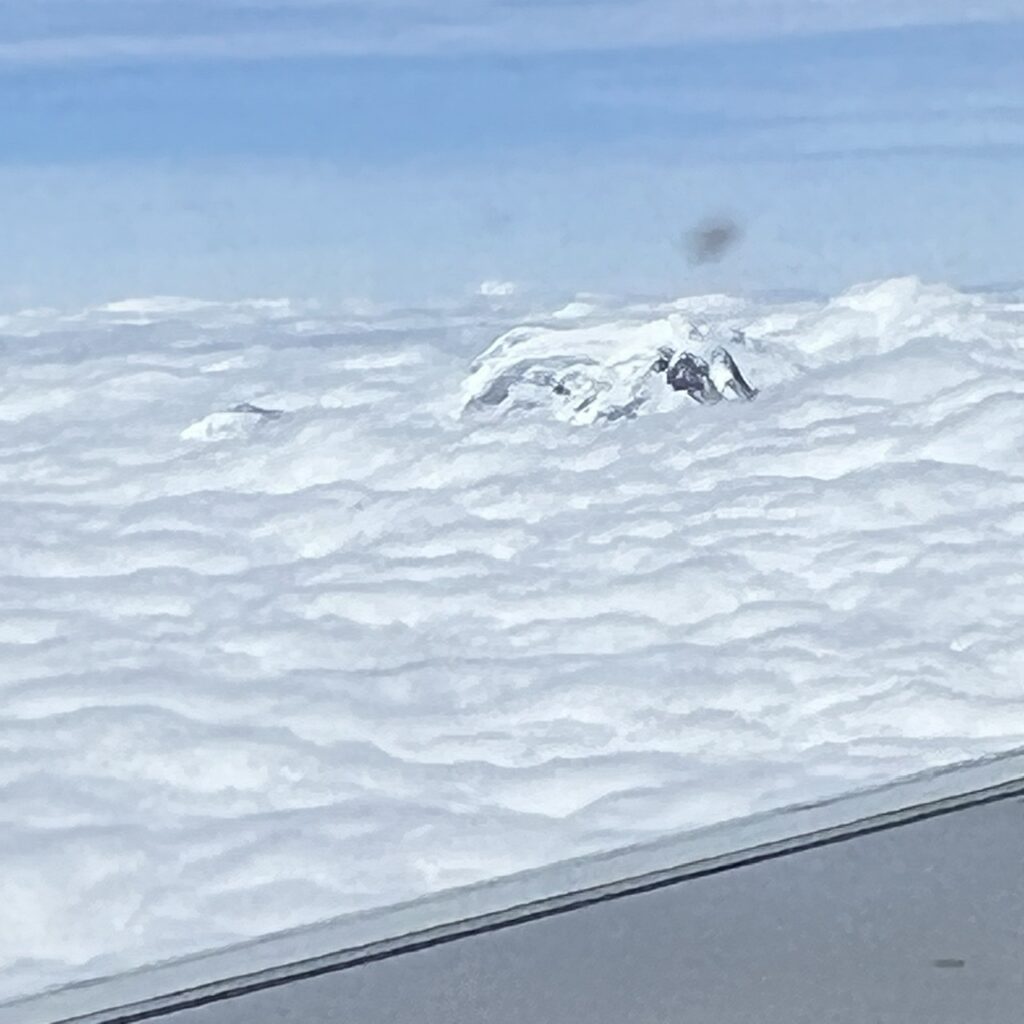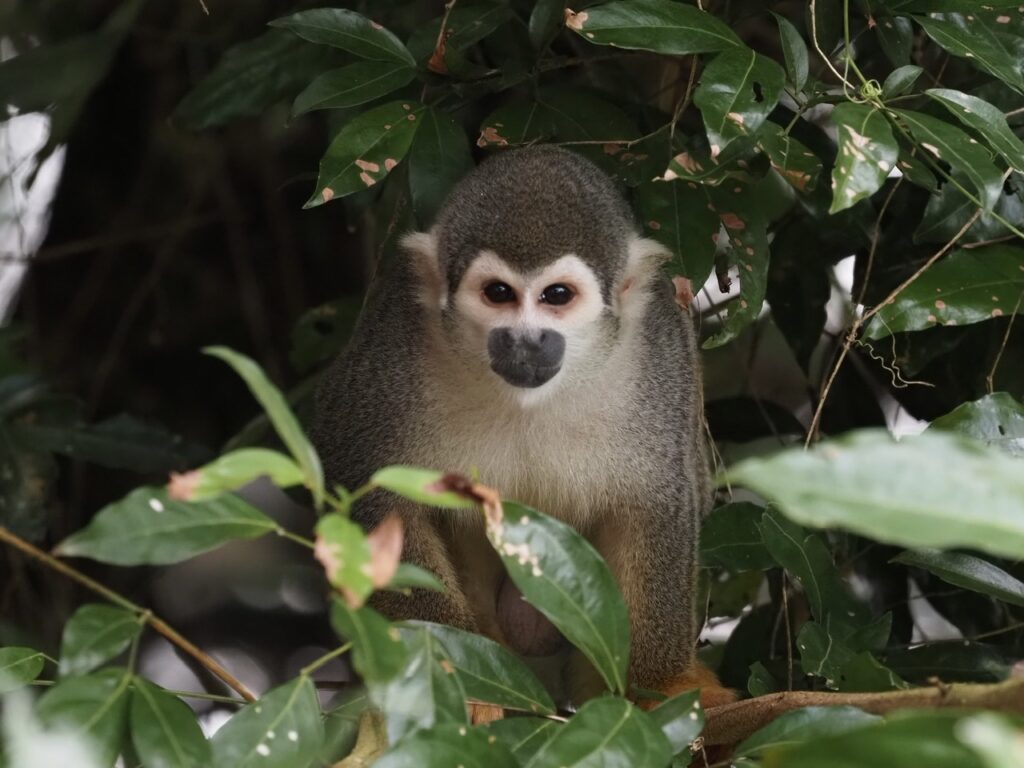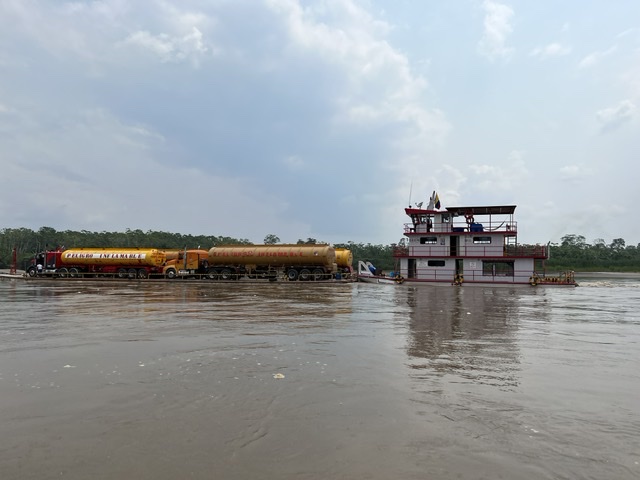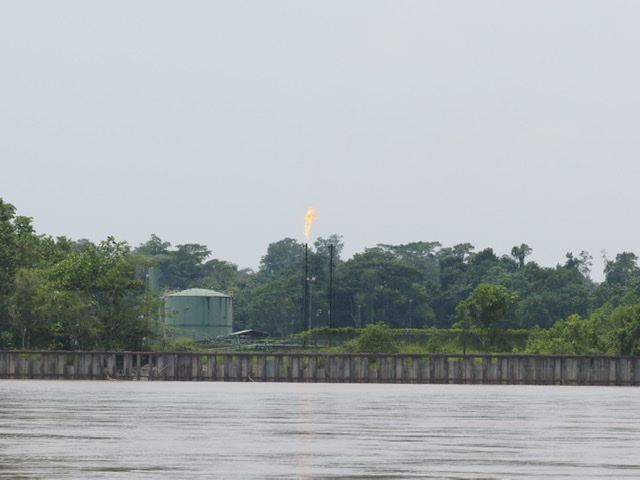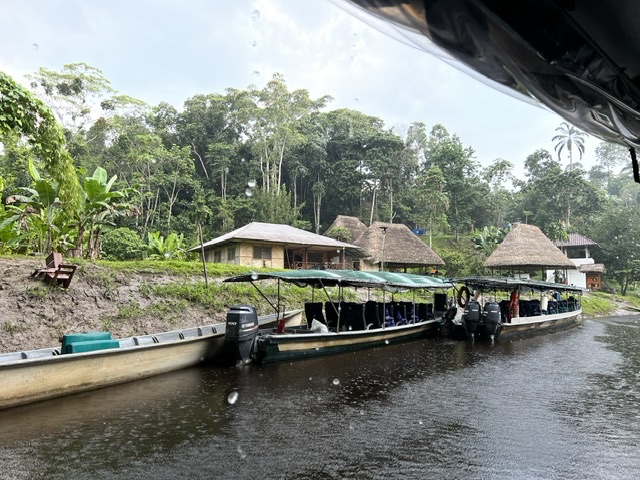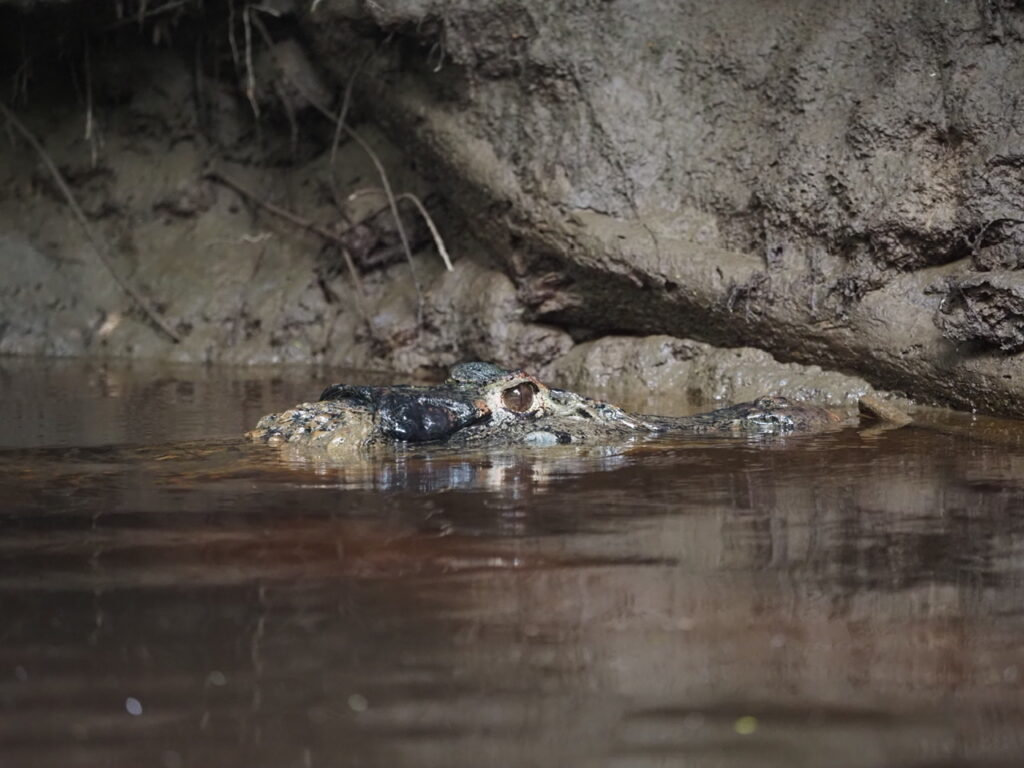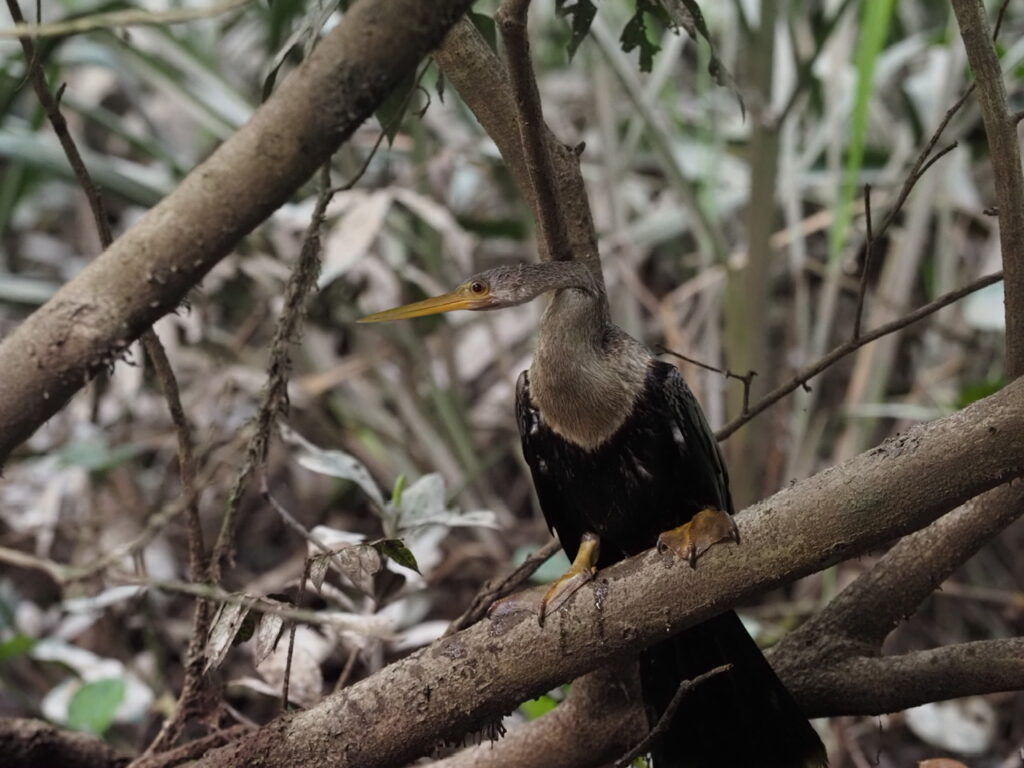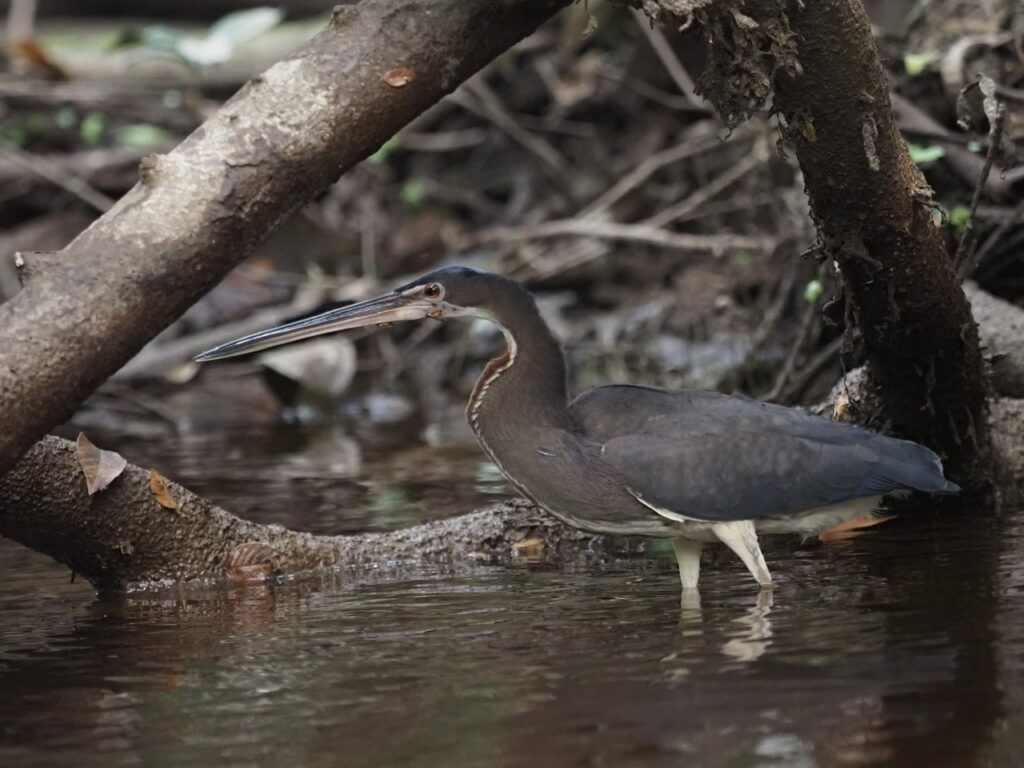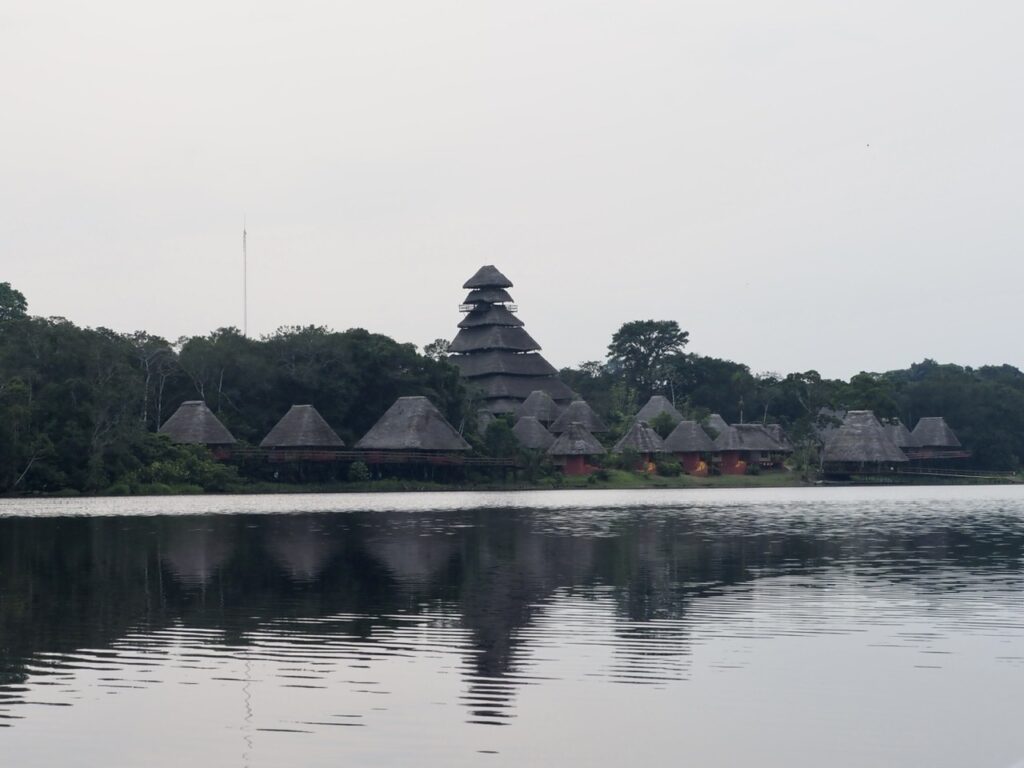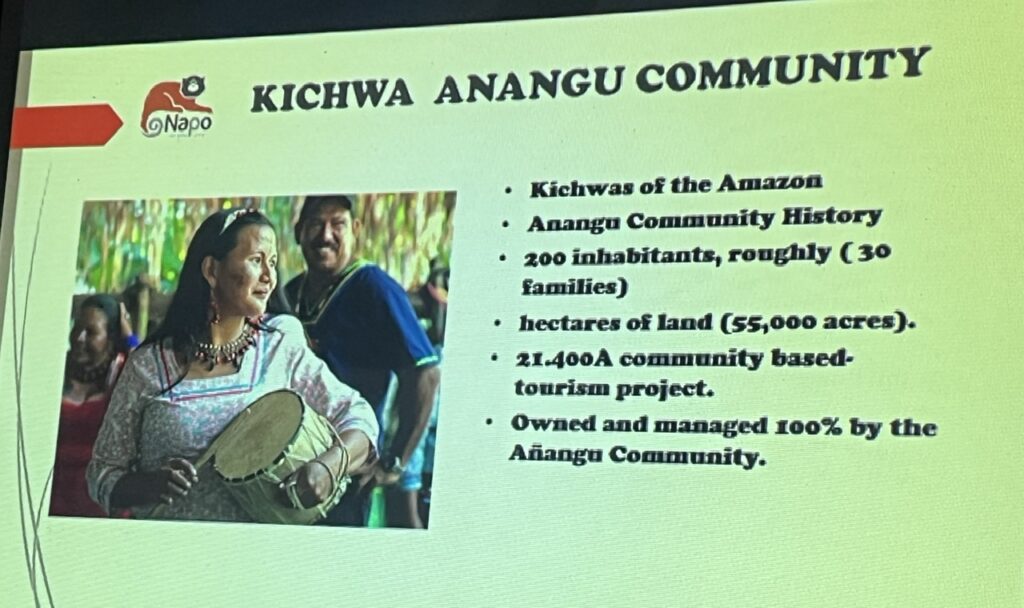
Every morning we get up earlier than the day before. It’s a 06.00 start today and a beautiful morning. We are going to visit a salt lick in the hope of seeing parrots and macaws and then visit the village where the Kichwa Anangu people live, to learn about their culture and customs.
We paddle for an hour then walk for five minutes to pick up the motorised canoe to take us 20 minutes downstream to the salt lick. We sit a couple of hundred yards off-shore for an hour watching clouds of parrots circling and landing in surrounding trees. They are very cautious and will not land until they are sure it is safe. This is tantalising and much like waiting for a migration crossing. Parrots land in trees closer and closer to the lick, but then get spooked, and rise from the trees squawking and chattering as they go. There are three species – Mealy, Dusky-headed and Blue-headed. They are all green and nigh impossible to see when they land. To prove my point there are at least 7 on the tree below but I bet you cannot see them all.

Whilst waiting we also notice a troop of red howler monkeys in the trees. Too distant for photos but I do have some acceptable video. Sadly our patience is not rewarded. Just as we think the parrots will land they are spooked and fly away.
Our next port of call is the Kichwa Anangu village. The thirty families own 21,400 hectares within the vast Yasmin National Park. In 1998 they decided to embrace tourism to protect their environment. There is oil under its soil and illegal logging is also a big threat. They raised funding, worked incredibly hard and built the Napo Wildlife Center (where we stayed). It is 100% run by the community, for the community. It is held as a beacon to other villages to demonstrate that there is an alternative to selling out to big business. A nearby village is paid just $400 per month for rights to their land from the oil companies. The Anangu made $55000 profit in their first years of opening – 2003. Since then they have opened a second lodge.
100% of the net profits of the business income, fund Community needs. There is now a school, which benefits children and youth from the Community and nearby settlements and there is a free boarding program, financed with tourism income. There is a health centre, where doctors offer permanent free care. Additionally, solar panels have been installed and a water purification system for the Community.
We see this first hand as there are stacks of solar panels ready to be installed as we enter the village. Our guide Jairo is in the foreground.

The local women run the Community cultural centre to educate tourists and raise fund with a shop, stocked with locally made crafts and demonstrations of their customers. The village has a large football pitch surrounded by the medical centre, cultural centre, shop and school.
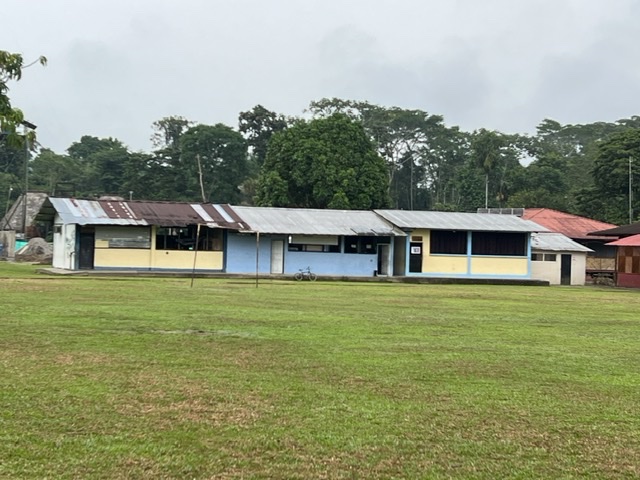


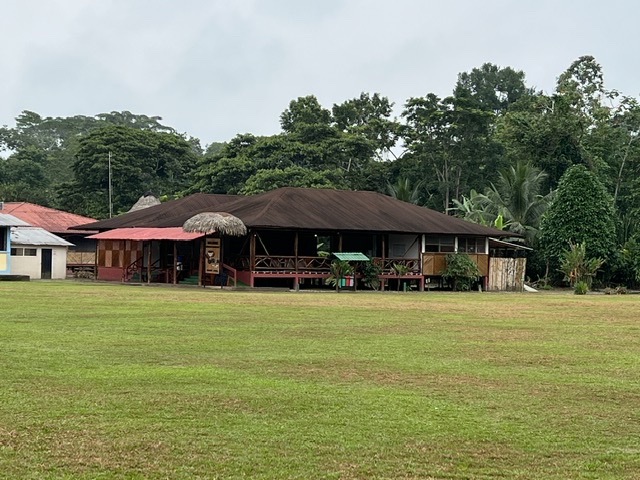
We are welcomed with a traditional dance.

They show us their instruments and tell us how they are made.
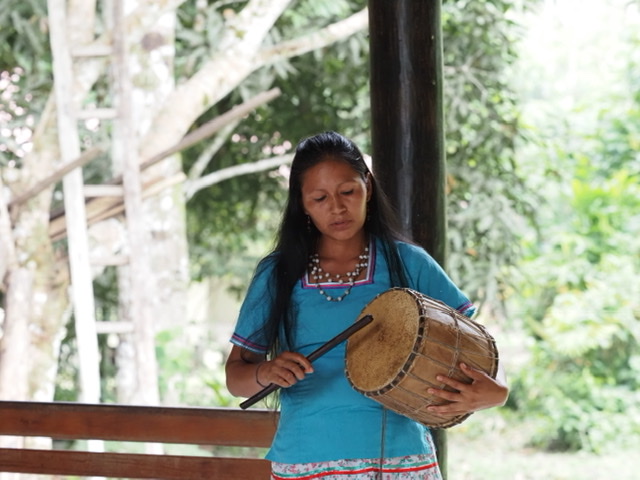

We then are told about hunting techniques and all try shooting a blowpipe. It is surprisingly effective and none of us missed the model toucan by much and two people had direct hits. We were shown how fabric was made from bark fibre and how a multi-purpose woven net basket could be used.
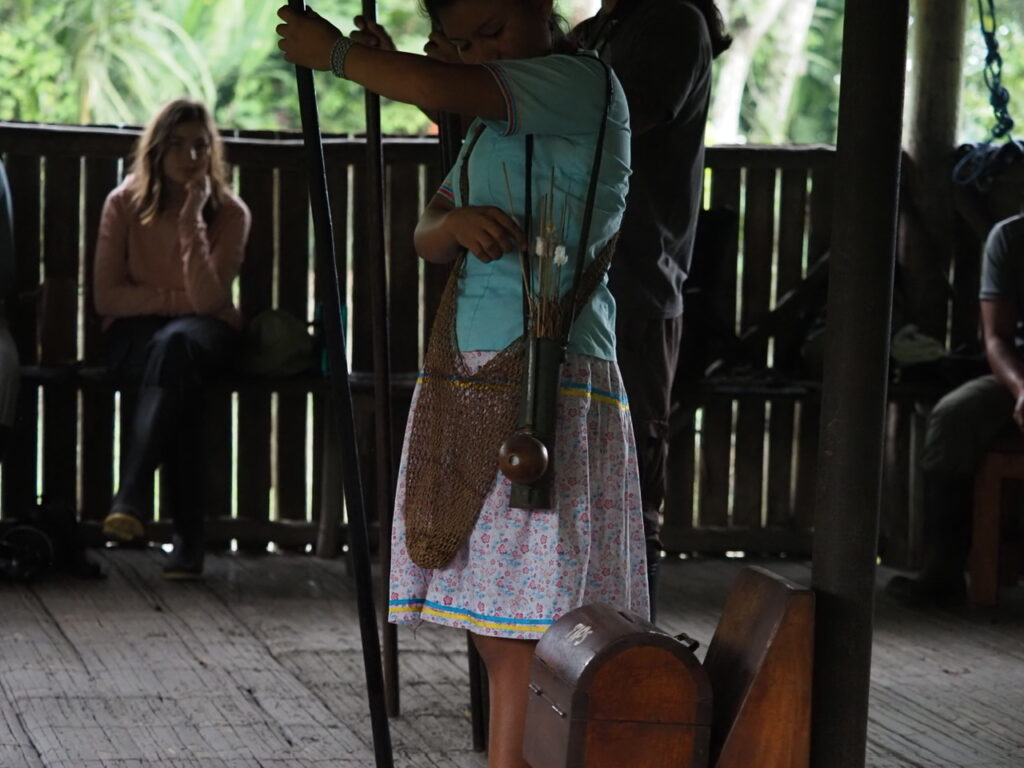
We end with a cooking demonstration and are ‘lucky’ enough to sample a selection of local delicacies.
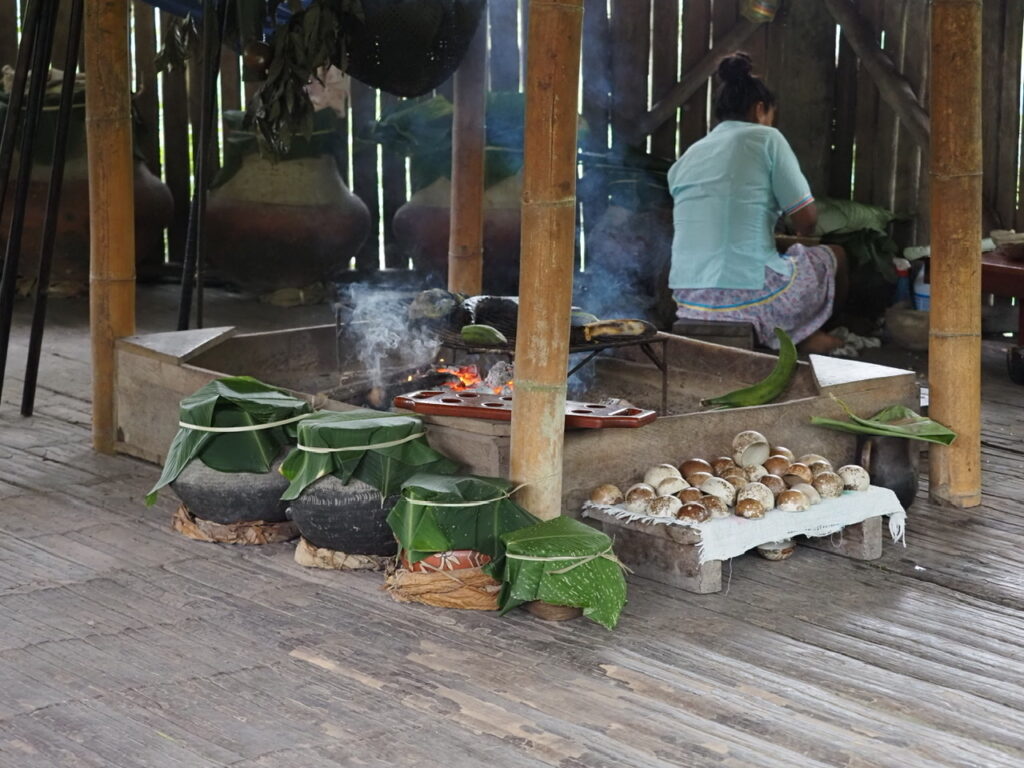
All were vegetable based and totally fine apart from the brown cooked item that looked like a sausage. We were assured it tasted like crispy bacon but told it was a grub found inside fruit. Some people actually ate it. I did tentatively taste it with the tip of my tongue and can confirm it tastes like salty bacon. I went to bite it but it was squidgy in the middle and I hastily discarded it.
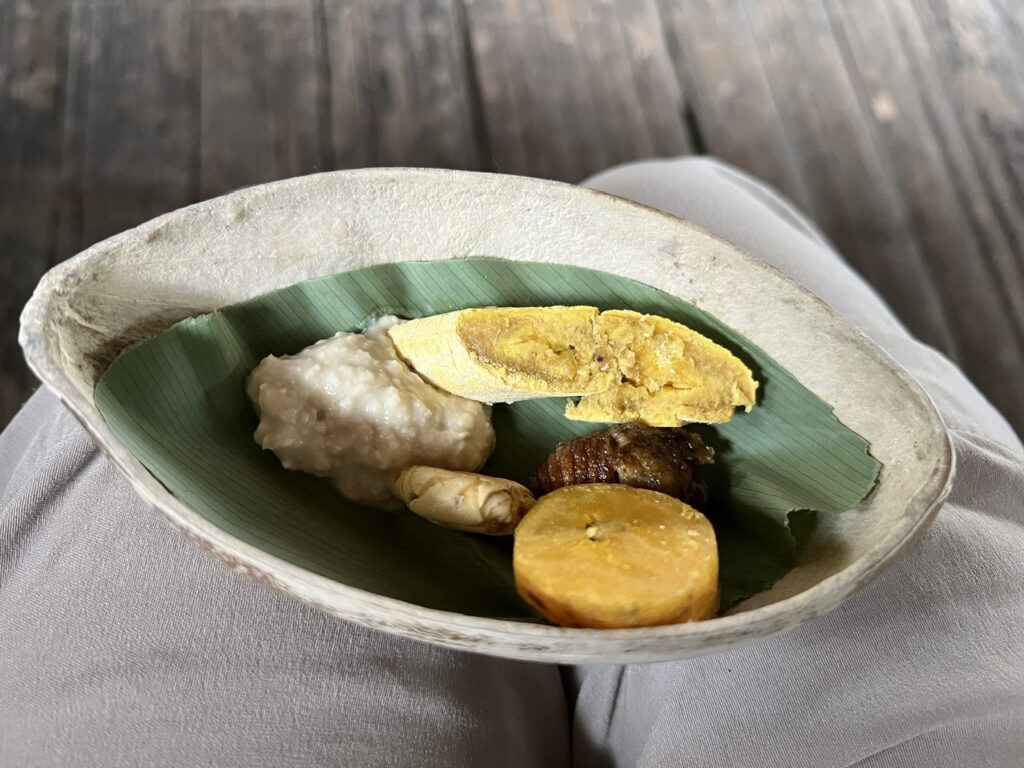
If you are of a squeamish disposition I suggest you look away now. We were now shown a live grub. It is huge and grotesque.

I have video of our local guide Patricio eating it. Just the most revolting thing I have ever seen and only made worse by an American tourist eating it too. His wife’s face was a picture of abject horror and disgust! It turns out he only did it as he has an Ecuadorean friend who told him to try it. However, it turns out the friend has only ever eaten them cooked!!
On a brighter note the children in the village are happy and well cared for which was lovely to see.


We thanked the women for their hospitality and then set off on a 30 minute walk to a hide by another salt lick. On our route we are joined by a group of woolly monkeys feeding in the trees above us. They are really big and muscular, surprisingly agile and difficult to film. What a treat and I do have some useable video.
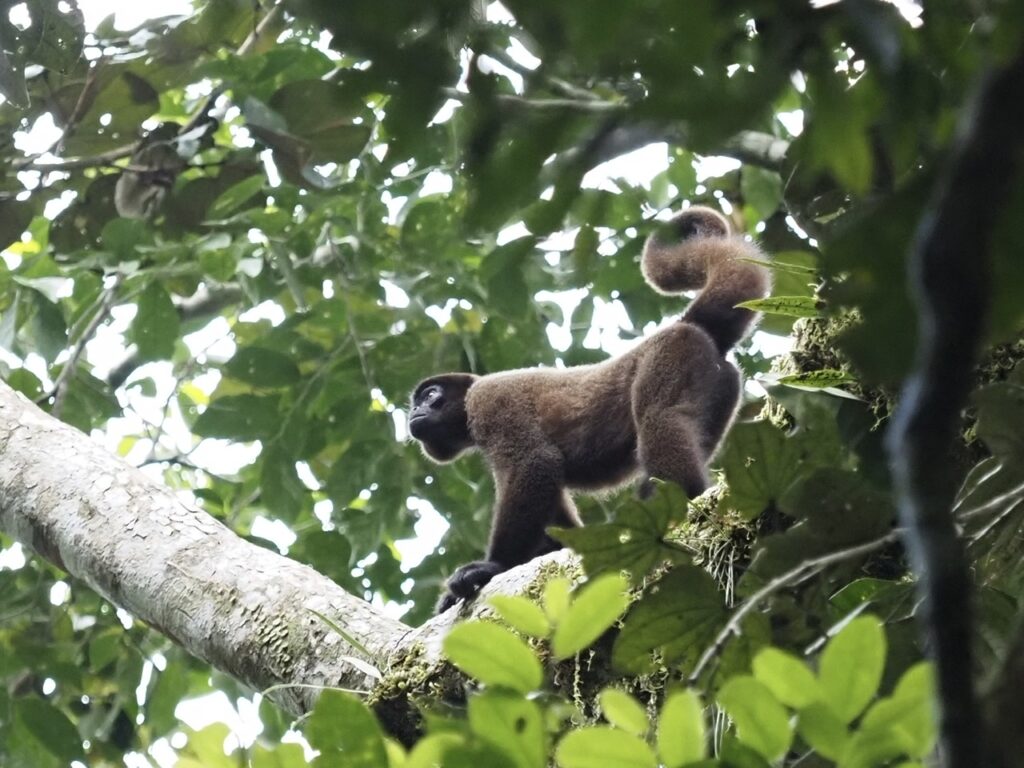
We reluctantly leave the monkeys and settle ourselves in the mosquito infested hide. There is no sound of parrots or macaws so we are not optimistic. 10 minutes pass and then a squawk. A beautiful macaw flies in to drink and is shortly joined by two more. The colours are so vibrant but shooting is hard, as we are in a shady hollow, and they are pretty fast moving when they decide to take to the wing .

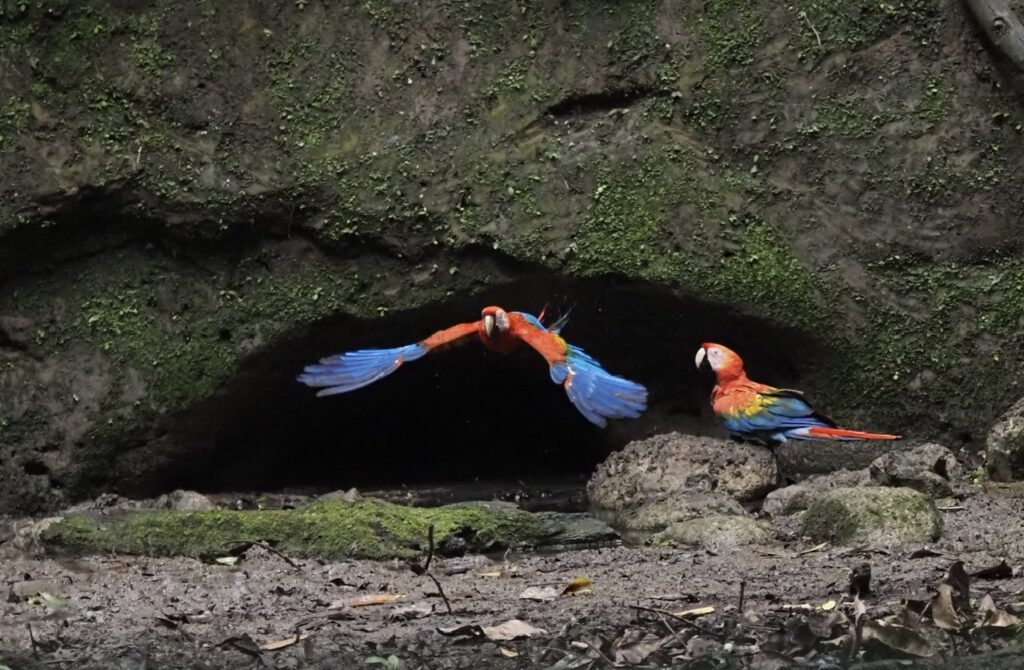

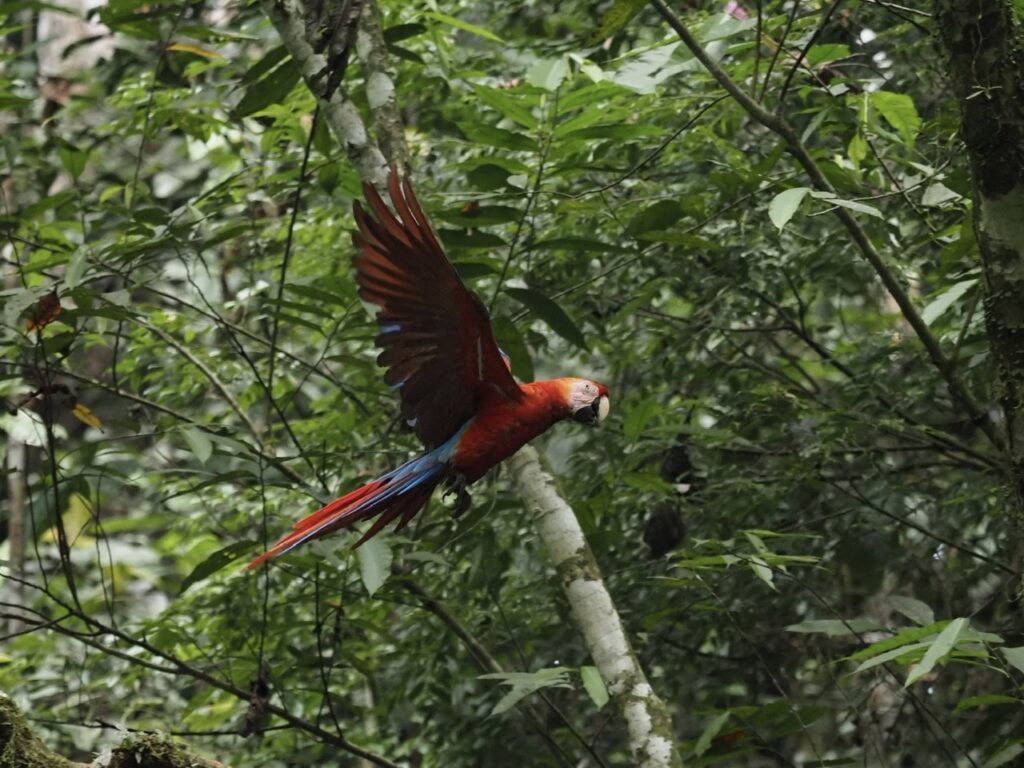
The macaws do not stay long. We head back to the river and it starts to rain just as we sit to have lunch. It is still raining when we leave so we all don ponchos, which are extremely effective but very unattractive. The rain eventually stops and then creatures start to appear to dry out. A rare sighting is a blue morpho butterfly. You hardly ever see them at rest with wings open.
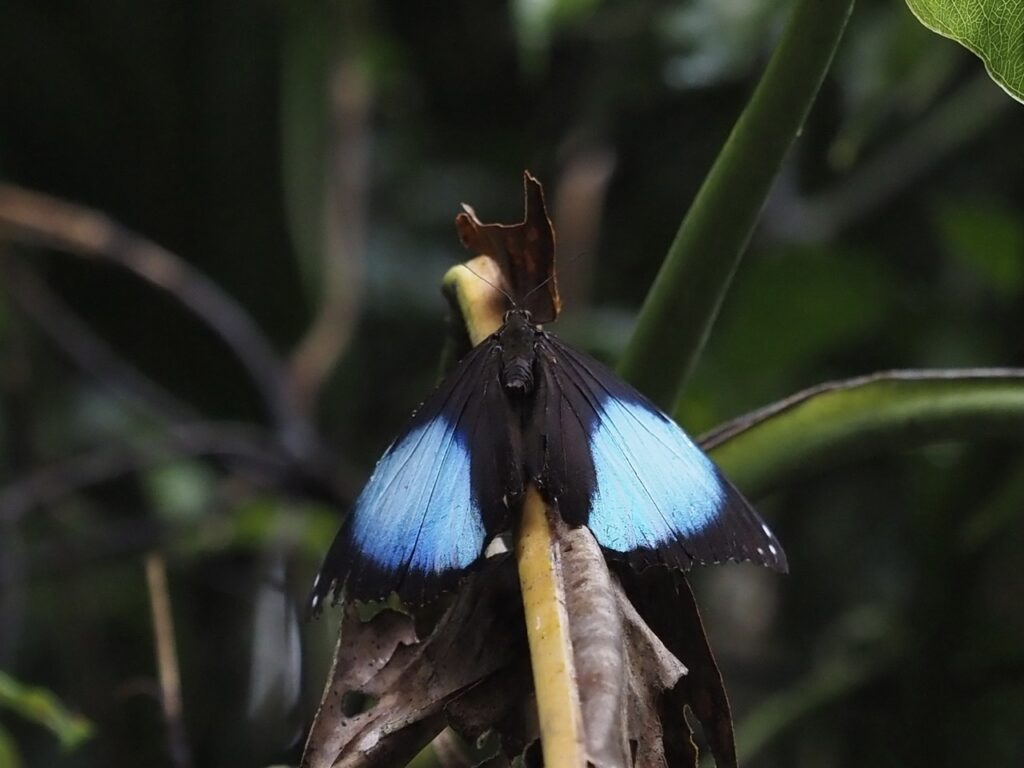
Then there is a real treat. The six otters are fishing in the channel right in front of us. This is a truly awesome experience and we stay with them for a quite a few minutes until they appear to be getting stressed with shrill cries and snorts. They even follow our canoe downstream as we leave.


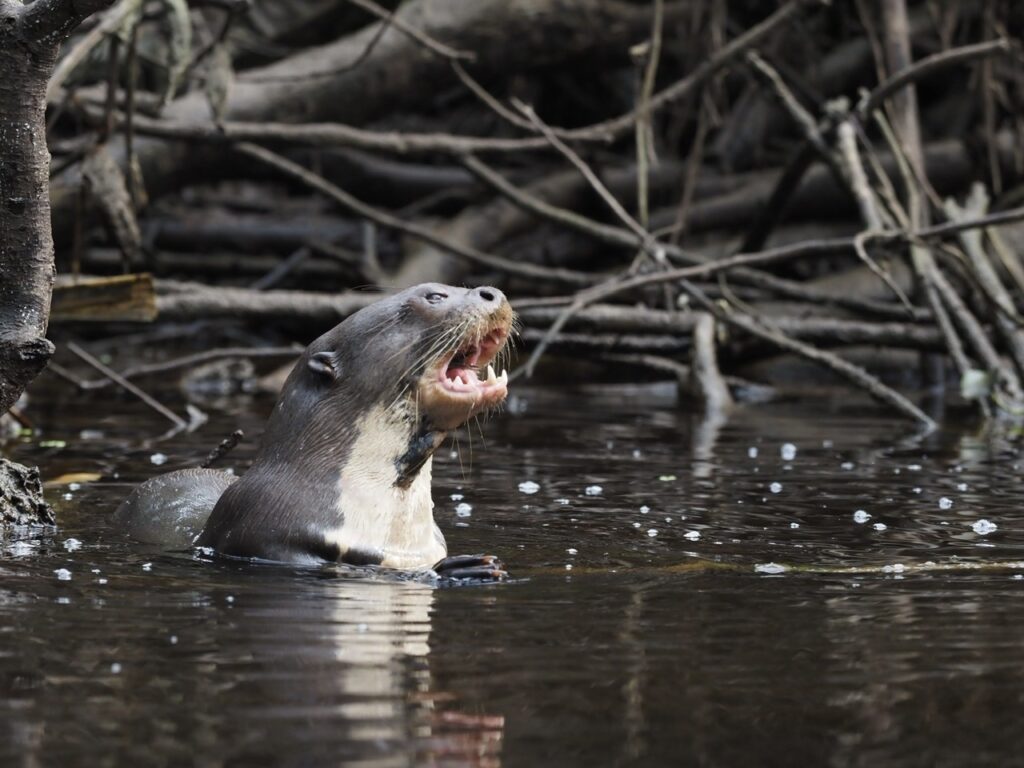

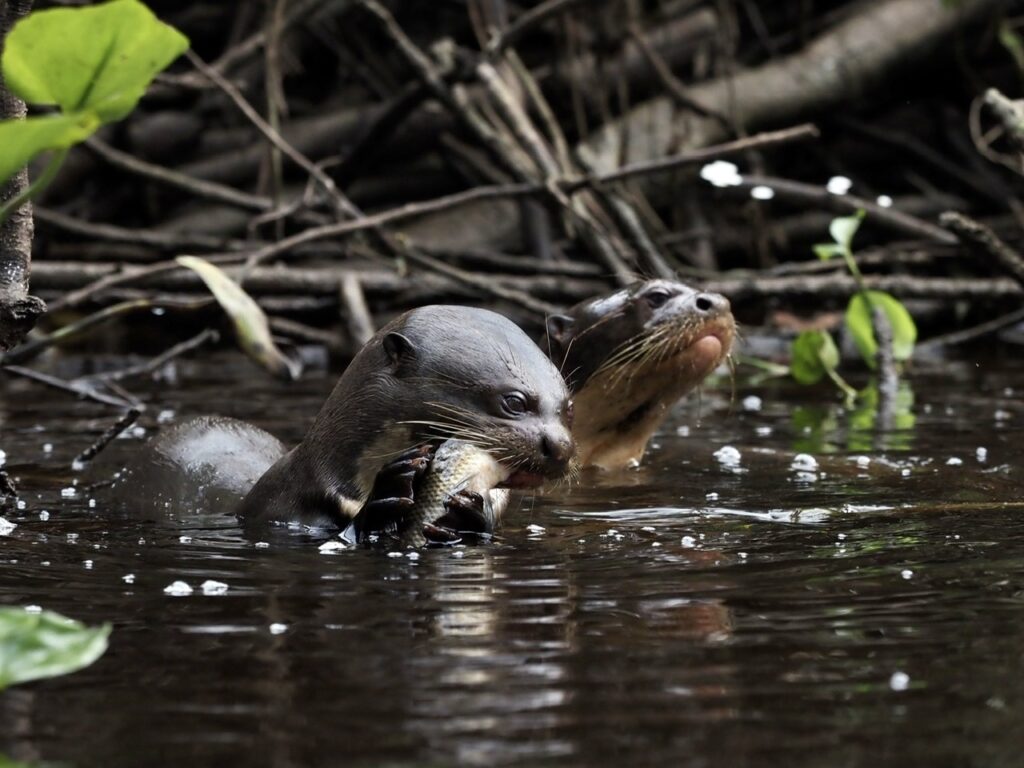
We are also lucky to find a tiger heron who for once allows us to approach him. The markings are incredible close-up.

After dinner we are supposed to go on a night walk. Fortunately it starts raining. This means we do not feel to guilty that we all decided against it as tomorrow we leave and must depart at 05.00. This has been as long day. We were out for 9.5 hours, everyone is tired and nobody has packed yet or settled bar tabs. Beauty sleep calls…






